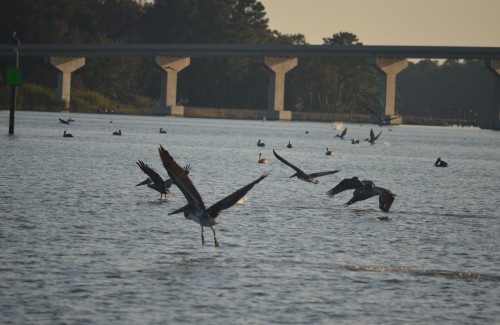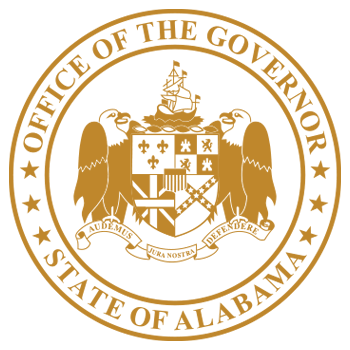Governor Bentley Announces Three Pilot Gulf Restoration Projects in Alabama

Projects funded as part of initial investment of funds derived from settlement of criminal charges against BP and Transocean.
MONTGOMERY – Governor Robert Bentley on Thursday announced the National Fish and Wildlife Foundation (NFWF) has approved $12.6 million for three pilot projects designed to restore some of Alabama’s natural resources affected by the 2010 Deepwater Horizon explosion and oil spill.
Thursday’s announcement represents the initial obligation of funds available from the Gulf Environmental Benefit Fund to support projects in Alabama. Under the plea agreement between the U.S. Department of Justice, BP and Transocean to settle certain criminal charges related to the oil spill, Alabama will receive $356 million for projects intended to remedy harm to the various natural resources affected by the oil spill. Alabama’s payments will be dispersed over a five-year period.
“The Alabama Gulf Coast is one of our greatest natural treasures, and we are committed to restoring and strengthening our coast from the impact of the oil spill,” Governor Bentley said. “As part of our continued commitment to the people of South Alabama, restoration of our natural resources remains a top priority. These pilot projects, identified as priorities in the Comprehensive Conservation Management Plan (CCMP), which was coordinated by the Mobile Bay National Estuary Program with broad-based community participation, will be part of a larger effort designed to establish the long-term restoration of our water quality, natural habitat and our economy. I want to thank all of our local, state and federal partners who are working with us in this long-term recovery effort.”
Alabama’s Pilot Projects Include:
D’Olive Watershed Restoration – approximately $6.8 million
• This project will restore degraded streams and install management measures to reduce excessive erosion and sedimentation due to development in the D’Olive watershed. Work will include projects on the three distinct tributaries of the D’Olive watershed and will significantly contribute to improved water quality and habitat creation in D’Olive and Mobile Bays.
Restoration and Enhancement of Oyster Reefs – approximately $3.8 million
• This project will focus on restoring Alabama’s oyster reefs in the Mobile Bay, Mississippi Sound and Bon Secour Bay. Through the planting of 50,000 cubic yards of new cultch material, dissemination of seed oysters and cultivation of existing reef beds, this project will increase Alabama’s oyster reefs by an additional 600 acres.
Fowl River Watershed Restoration – approximately $2 million
• This project includes significant restoration work and the development of a comprehensive watershed management plan for Fowl River. The management planning is being done to quantitatively analyze the impact of pollutants and sediment overloads on the quality of water entering Mobile Bay from this watershed.
“The Department of Conservation and Natural Resources is working with representatives from NFWF to put together a public meeting before the end of the year,” said Alabama Conservation and Natural Resources Commissioner Gunter Guy. “We want to provide additional information about NFWF, the Gulf Environmental Benefit Fund and the types of projects that could be implemented under this program. As soon as we have more details on a date and location, we will share that information.”
Governor Bentley added his support for public input.
“Public input is an important part of the long-term recovery of the coast,” Governor Bentley said. “The public will have an opportunity to recommend projects for additional funding. We recognize that recovery is a long-term process, and these projects represent only a portion of our overall efforts to address the damage done to the natural resources of the Gulf Coast.”
Provided by the Office of the Governor of Alabama | governor.alabama.gov

